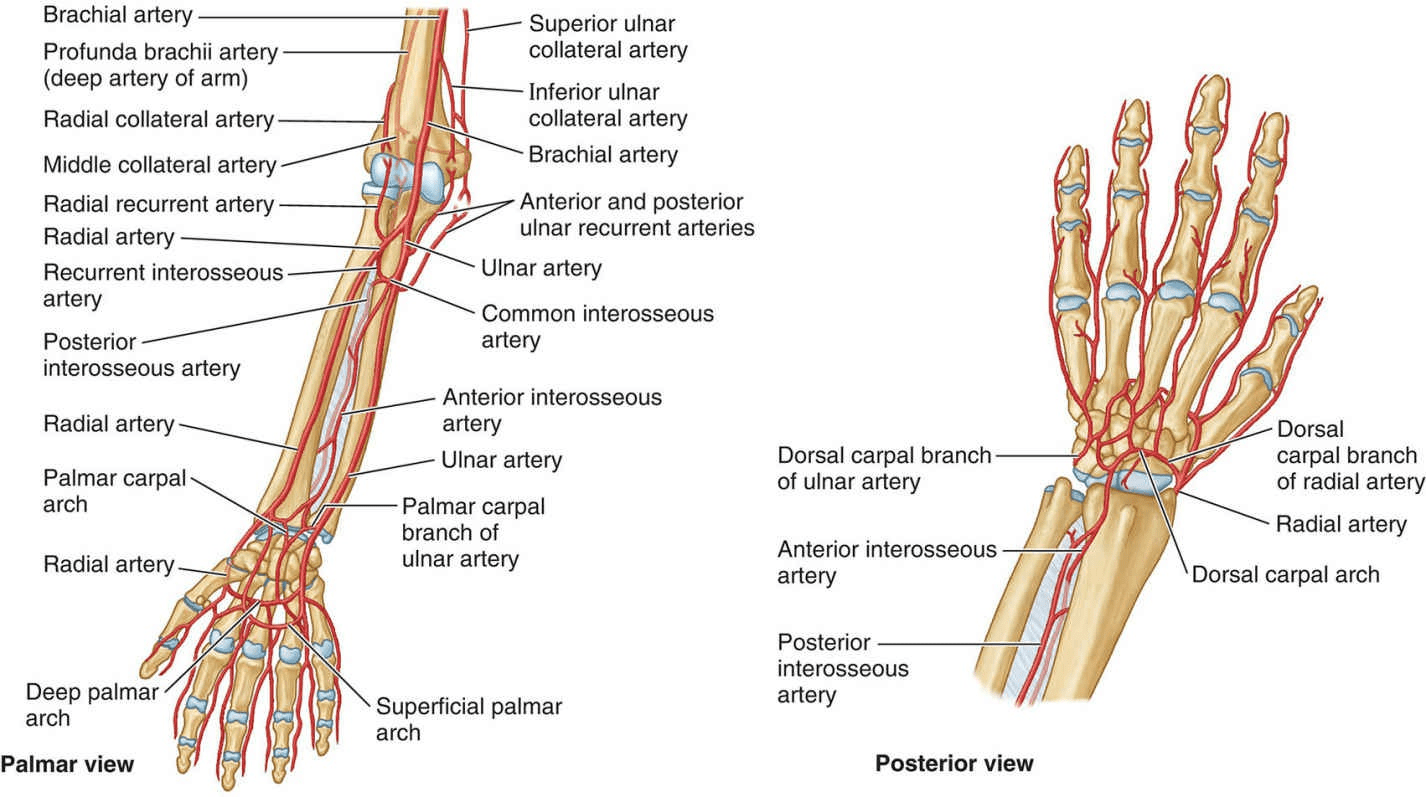Palpation of Radial Artery
content of this page
1- Introduction
2- Anatomical Overview
3- Procedure
4- Clinical Significance
Introduction

Anatomical Overview
Radial Artery:
- Location: The radial artery is one of the major arteries in the forearm, originating from the brachial artery in the cubital fossa (the area at the front of the elbow).
- Course: It travels along the radial (thumb) side of the forearm, running close to the surface, and then crosses the front of the wrist (anatomically known as the flexor aspect of the wrist).
- Termination: It continues into the hand, where it contributes to the superficial and deep palmar arches, supplying blood to the hand and fingers.
Wrist Anatomy:
- The wrist is composed of multiple bones, including the radius and ulna of the forearm, and the carpal bones of the wrist itself.
- The radial artery crosses the wrist just lateral (towards the thumb side) to the flexor carpi radialis tendon and the styloid process of the radius bone.

Procedure
- The pulsations of the radial artery can be felt throughout the forearm, making it useful as an anterolateral demarcation of the flexor and extensor compartments of the forearm. When the brachioradialis is pulled laterally, the entire length of the artery is visible. The radial artery lies on muscle until it reaches the distal part of the forearm. Here it lies on the anterior surface of the radius and is only covered by skin and fascia, making this an ideal location for checking the radial pulse.
The course of the radial artery in the forearm is represented by a line joining the midpoint of the cubital fossa to a point just medial to the radial styloid process. The radial artery leaves the forearm by winding around the lateral aspect of the wrist and crosses the floor of the anatomical snuff box.
Clinical Significance
Assessment of Peripheral Circulation: Palpating the radial artery allows healthcare providers to assess peripheral circulation in the hand and fingers. Changes in pulse rate, rhythm, and quality can indicate circulatory compromise, peripheral artery disease, or conditions affecting cardiac output.
Monitoring Vital Signs: The radial pulse is one of the vital signs routinely assessed in clinical practice. Monitoring the radial pulse provides important information about heart rate and rhythm, which are essential indicators of cardiovascular health and overall hemodynamic status.
Assessment of Cardiac Output: The radial pulse amplitude (strength) can reflect cardiac output, with a stronger pulse typically indicating a higher stroke volume and cardiac output. Changes in pulse amplitude may indicate alterations in cardiac function and hemodynamics.
Evaluation of Arterial Blood Supply: Palpation of the radial artery helps assess the patency and adequacy of arterial blood supply to the hand and fingers. Absence or diminishment of the radial pulse may suggest arterial occlusion, peripheral vascular disease, or vascular injury.
Diagnostic Clues in Cardiovascular Disorders: Alterations in the radial pulse characteristics, such as irregularity, weak amplitude, or paradoxical pulse (pulse that diminishes significantly during inspiration), can provide diagnostic clues in various cardiovascular disorders, including arrhythmias, valvular heart disease, and cardiac tamponade.